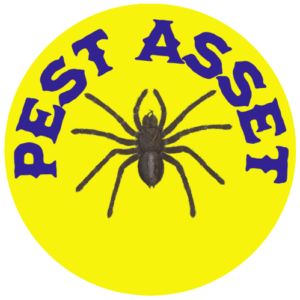Table of Contents
Sharing your abode with 8-legged menaces might not be your ideal living situation, but spiders are more than just creepy crawlies – they’re fascinating ecological allies, keeping pesky insect populations in check. In fact, the average American home hosts at least 10 spiders! (Don’t panic, most are harmless and prefer to keep their distance.) This guide will introduce you to the five most common spider species you’ll likely encounter in your domestic domain, helping you distinguish friend from foe and navigate cohabitation with these intriguing arthropods.
The 8-Legged Web-Slinging Wonders:
1. American House Spider: These common housemates, also known as cobweb spiders, spin tangled webs in corners and dark nooks. They’re relatively large, growing up to 1.5 inches, and typically sport a brownish-gray body with faint markings. While their webs might catch dust bunnies and the occasional moth, they’re harmless to humans and prefer fleeing rather than fighting.

Fun Fact: Female American house spiders can lay up to 1,000 eggs in a single sac! Thankfully, only a fraction of these hatchlings survive to adulthood.
2. Cellar Spiders: With their long, spindly legs and penchant for damp basements, cellar spiders (also known as daddy long-legs) are easily recognizable. Despite their creepy appearance, they’re completely harmless and play a vital role in controlling pesky flies and mosquitoes. Their webs are messy and irregular, often stretching across corners and ceilings.

Did You Know? Cellar spiders technically aren’t true spiders! They belong to the order Opiliones, which are related to harvestmen and have two body segments instead of a fused cephalothorax and abdomen like true spiders.
The Shy and the Stealthy:
3. Jumping Spiders: These curious critters are named for their impressive leaps, using powerful legs to pounce on prey. They boast excellent vision, with eight eyes that provide a panoramic view of their surroundings. Don’t worry about jump scares, though – they’re typically small (less than half an inch) and prefer hiding amongst plants or furniture.

Jumping spiders can change their eye color! Some species shift from green to black depending on their mood or hunting strategy.
4. Wolf Spiders: Unlike their web-spinning counterparts, wolf spiders are nomadic hunters, actively stalking their prey across floors and walls. They’re fast, agile, and possess excellent eyesight, making them skilled insect assassins. Though larger than house spiders (growing up to 1 inch), they’re shy and rarely aggressive towards humans.

The Venomous Few (But Don’t Panic!):
5. Brown Recluse Spiders: While uncommon in many parts of the country, brown recluse spiders deserve mention due to their potentially dangerous venom. They’re typically found in secluded areas like woodpiles and attics, and are recognizable by their violin-shaped marking on their back. Exercise caution around potential hiding spots and seek professional help if you suspect a bite, but remember, brown recluse bites are relatively rare and fatalities are even rarer.

Should we fear all spiders, or learn to co-exist with these beneficial predators, controlling pest populations and adding a touch of ecological wonder to our homes?
Remember, understanding goes a long way in mitigating fear. By learning about the common spiders in your region, you can appreciate their ecological role and navigate cohabitation with these fascinating eight-legged creatures. Just remember to respect their space, avoid unnecessary handling, and seek professional help if you encounter a potentially
Conclusion:
Sharing your home with spiders might not be everyone’s cup of tea, but understanding these arachnids can transform fear into fascination. Remember, most spiders are harmless and play a vital role in keeping pesky insects at bay. Embrace their ecological contribution, respect their presence, and co-exist peacefully with these eight-legged wonders.
Bonus Tips for Peaceful Spider Coexistence:
- Seal cracks and crevices to prevent unwanted spider guests from entering your home.
- Invest in natural pest control solutions like peppermint oil or diatomaceous earth to deter spiders without harming them.
- Educate yourself about the spiders in your region. Learning about their behavior and identifying potentially dangerous species can ease anxieties.
Relevant Links:
- American Arachnological Society: https://www.americanarachnology.org/
- National Pest Management Association: https://www.npmapestworld.org/
- University of California Riverside Spider Identification Guide: https://spiders.ucr.edu/
- Centers for Disease Control and Prevention on Brown Recluse Spiders: https://www.cdc.gov/niosh/topics/spiders/resources.html


